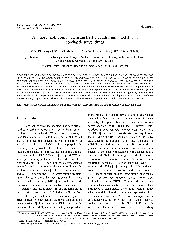摘要
Based on the reliability budget and percentile travel time (PTT) concept, a new travel time index named combined mean travel time (CMTT) under stochastic traffic network was proposed. CMTT here was defined as the convex combination of the conditional expectations of PTT-below and PTT-excess travel times. The former was designed as a risk-optimistic travel time index, and the latter was a risk-pessimistic one. Hence, CMTT was able to describe various routing risk-attitudes. The central idea of CMTT was comprehensively illustrated and the difference among the existing travel time indices was analyzed. The Wardropian combined mean traffic equilibrium (CMTE) model was formulated as a variational inequality and solved via an alternating direction algorithm nesting extra-gradient projection process. Some mathematical properties of CMTT and CMTE model were rigorously proved. Finally, a numerical example was performed to characterize the CMTE network. It is founded that that risk-pessimism is of more benefit to a modest (or low) congestion and risk network, however, it changes to be risk-optimism for a high congestion and risk network.
- 出版日期2013-12
- 单位北京交通大学
